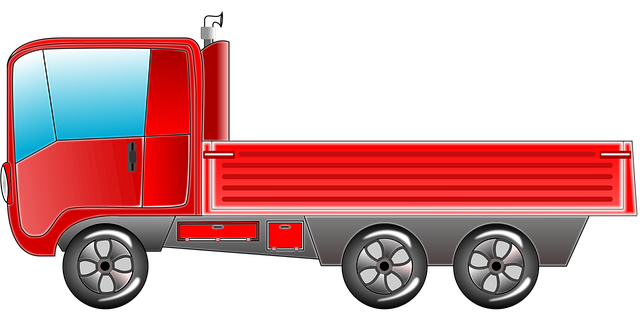Looking to register your car in California? This comprehensive guide walks you through the process, ensuring a smooth experience. From understanding crucial registration requirements to completing the DMV VIN verification step-by-step, we’ve got you covered. Gather necessary documents, fill out your application, and pay fees efficiently. By following these clear instructions, registering your vehicle in California has never been easier.
- Understand California Car Registration Requirements
- Gather Necessary Documents for Vehicle Registration
- Perform DMV VIN Verification Step-by-Step
- Complete and Submit Your California Car Registration Application
- Pay California Vehicle Registration Fees
Understand California Car Registration Requirements

Before registering your car in California, it’s crucial to understand the state’s specific requirements. The California Department of Motor Vehicles (DMV) mandates several essential steps to ensure vehicle safety and legitimacy. One critical aspect is the verification of the Vehicle Identification Number (VIN). This unique code is a vital component in identifying your car and can be easily checked through a process known as VIN inspection or dmv vin verification.
A mobile vin inspection or using a mobile vin verifier is a convenient way to meet this requirement. By providing your VIN to the DMV, you allow them to cross-reference it with their records to ensure the vehicle’s history is clean and it complies with all necessary safety standards. This step is crucial for preventing fraud and ensuring only legitimate vehicles are registered on California roads.
Gather Necessary Documents for Vehicle Registration

Before heading to the DMV for vehicle registration, ensure you have all the essential documents in order. This process is crucial and requires careful preparation. You’ll need your vehicle’s Registration Application (form DVF 140), which can be obtained from the California DMV website or any local office. Additionally, a valid driver’s license, proof of insurance, and the Vehicle Identification Number (VIN) inspection report are mandatory. The VIN is a unique code that identifies your car, and a proper VIN inspection ensures accuracy, which is why many opt for a mobile vin verification service to simplify this step.
Among these documents, the VIN inspection stands out as a critical component. It involves a detailed check of your vehicle’s history and condition, ensuring it meets all legal standards. This process can be completed through various means, including traditional vin inspection at authorized centers or utilizing modern solutions like mobile vin verifier apps, offering convenience and swift verification. Having these documents ready will streamline the registration process, making your visit to the DMV more efficient.
Perform DMV VIN Verification Step-by-Step

Performing a DMV VIN (Vehicle Identification Number) verification is a crucial step when registering your car in California. Here’s a step-by-step guide to help you navigate this process efficiently. First, gather all necessary documents, including your vehicle’s registration certificate from the previous state, proof of insurance, and valid driver’s license. Then, visit a California DMV field office or utilize their online services for VIN verification.
When at the DMV, an agent will assist you in checking the vehicle’s history through its unique VIN number. They’ll confirm the vehicle’s age, ensure it meets safety standards, and verify if there are any outstanding issues or recalls associated with the car. For added convenience, many mobile vin verifiers can perform this inspection on-site or even remotely, making the task quicker and more accessible, especially for out-of-state residents looking to register their vehicles in California.
Complete and Submit Your California Car Registration Application

After gathering all your necessary documents, it’s time to complete and submit your California Car Registration Application. This form is typically available online or at your local DMV office. Make sure to fill out every section accurately, including your personal information, vehicle details, and insurance information. Double-check that the Vehicle Identification Number (VIN) is correctly entered, as this is a critical component in the registration process. The DMV will require a valid VIN verification, which can be done through a mobile vin inspection or an official vin inspection service.
Once your application is complete, submit it along with all required fees to the DMV. You may also opt for a mobile vin verifier to ensure the accuracy of your VIN and streamline the registration process. Keep in mind that the DMV will verify the information provided and conduct a background check on both the vehicle and the applicant. This step is crucial to maintain the integrity of California’s vehicle registration system.
Pay California Vehicle Registration Fees

After gathering all necessary documents and ensuring your vehicle meets California’s requirements, it’s time to pay the fees associated with registering your car. The California Department of Motor Vehicles (DMV) charges a base fee for registration, which may vary based on your vehicle type. Additionally, you’ll need to complete a DMV VIN verification process, which involves providing your vehicle’s unique identification number (VIN) and ensuring the vehicle matches the information on record.
You have several options for this step, including paying online through the DMV’s website or visiting a local DMV field office. Some residents also opt for a mobile vin inspection or use a mobile vin verifier service to streamline the process. Regardless of your chosen method, ensure you pay all required fees accurately and completely before proceeding with registration.
Registering a car in California involves understanding state requirements, gathering essential documents, and completing several steps. By following these straightforward procedures, including performing a DMV VIN verification, you can ensure a smooth process. Remember to keep all your records organized for future reference. Now that you’re prepared, take the next step and complete your California car registration application.
